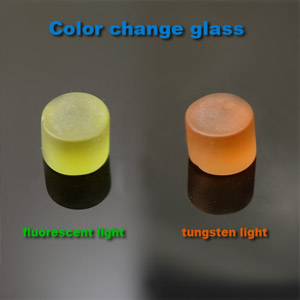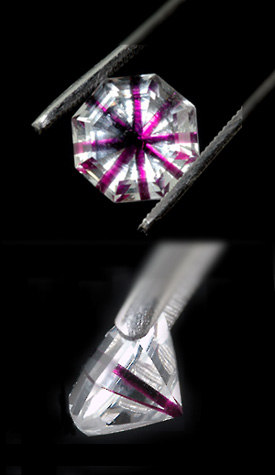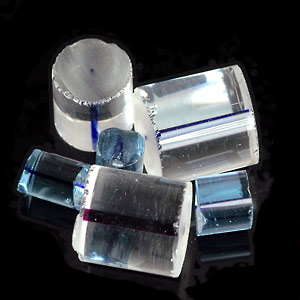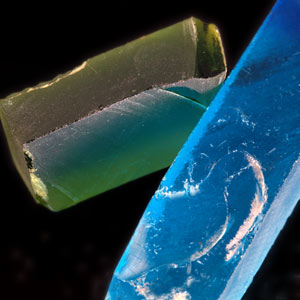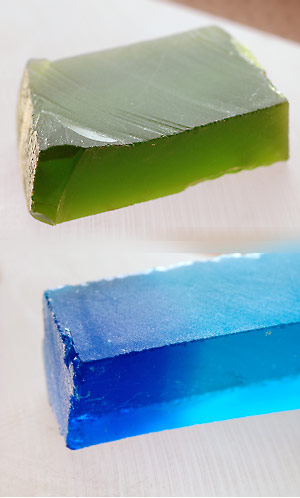| Here are some examples of simple glass. It is one of the easiest materials to cut into stones. It is inexpensive and requires only heat to make.
The first example is a color-change glass produced somewhere in North Carolina (and no doubt other locals). It shows a very strong color change from orange to green under different light. I have not cut a finished stone from this material thus far so only have the rough.
The color change may be due to the use of a naturally occurring monazite from North Carolina. It occurs in a quartz vein in Montgomery County, NC, and is known for the same color change in its natural state. It stands to reason that glass produced from this material would share in the color change.
The second example is a glass rod with a second tiny colored glass rod inside. If a stone is cut to orient the internal rod through the face (table) of the final cut, it creates a complex pattern based on the internal reflections of the facets. The stone cut to the left by the author is a simple 8 sided step cut.
The final material described below is Mt. St. Helen ash which was melted and solidified as glass. The colors run from green to blue. Further testing has shown that only a small percentage of the material contains ash, most of it is just normal glass with some ash adding to the color.
|


